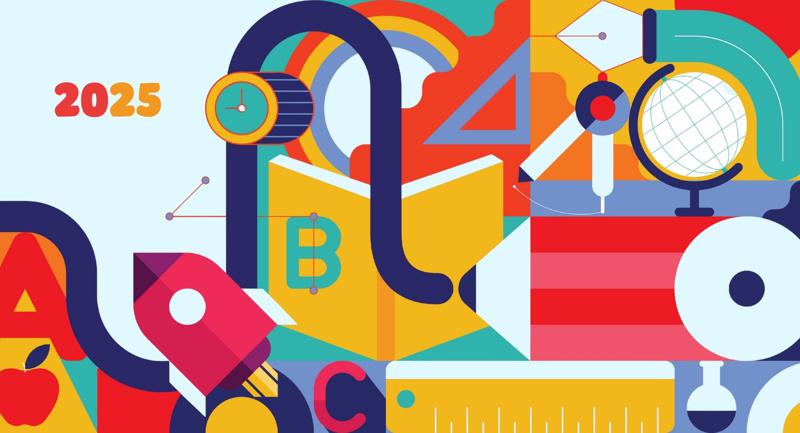Educational Leadership received the following letter in response to Rashaida Melvin and Lauren Vargas's article “Four Myths on Coaching and Efficacy” in the November 2021 issue.
Letter from Arthur L. Costa and Robert Garmston:
In their article, Rashaida Melvin and Lauren Vargas make a reasoned case for choreographed “technical” coaching (coaching around a body of knowledge—in this case, teacher effectiveness). Yet we think several major flaws or misunderstandings in the article give a distorted view of the reflective strategies of cognitive coaching.
The authors state that one myth is “Teachers must change their minds before changing their actions” and they quote Jim Knight’s definition that “cognitive coaching is predicated on the assumption that behaviors change after our beliefs change.”
Teachers are complex thinking, feeling, and behaving human beings performing in one of the most complex and stressful of situations—the classroom. The assumption that simply telling teachers what to do differently will bring about lasting and transferable change, without aligning those new behaviors with the teacher’s thoughts, feelings, values, and belief systems, is seriously flawed.
In addition, brain research informs us that learning is enhanced when it engages multiple
locations in the brain: the senses, the frontal lobes, and the emotions (the amygdala). Effective coaches intervene by engaging multiple areas of the brain, and simply telling teachers what they should be doing does not accomplish this.
In Myth # 3, “Teachers grow the most when they arrive at the answers themselves,” the authors argue that, in their work with teachers, instructional leaders often rely too heavily on reflective practices, encouraging journeys of “self-discovery” rather than a focus on “actual effectiveness in the classroom.”
But each question in a structured reflective conversation in cognitive coaching is part of a larger purpose: First, to make sure that what the teacher recalls about the lesson or situation is accurate, that there is evidence of goal attainment for the lesson, and to discuss insights about future endeavors to improve student attainment and teacher competencies. Second, to reflect on the coaching process itself, so this process might be internalized in the self-directed skill set of the teacher.
In these conversations, teachers also have a chance to reflect aloud on their own behavior and student responses. They thereby gain a deeper understanding about how their perceptions and thinking inform their choices. There are many micro-reasons why teachers may fail to engage all kids. By surfacing these reasons and talking them through, the teacher begins to change not only their behavior, but also their thinking and feelings about how to manage the complexities of a classroom.
The key question is: Should coaches assume their identity as the source of change (a fixer of faulty practice) or as a catalyst (a thought partner for growth)? Thought partners think through something together, which builds an openness to be vulnerable and to authentically grow. Of course, any competent coach will offer a teacher alternative moves when they are mishandling a situation. The difference is in making the teacher, rather than the coach, the centerpiece of their conversation.
Jim Knight’s model of cognitive coaching is exemplary in developing a coach’s understanding
of teaching. Cognitive coaching has been shown to positively influence teacher craftsmanship, efficacy, and consciousness. Practitioners of choreographed coaching could add value to their practice by learning more about these reflective practices.
Response from Rashaida Melvin and Lauren Vargas:
In choreographed coaching, coaching is a catalyst to support teachers’ changes in their actions and practices in the classroom before addressing growth in their mindsets. Similar to the brain science you mentioned, as well as research on culture and the brain, the thoughts, feelings, and beliefs of teachers are far from ignored in choreographed coaching, but they are typically engaged while or after making intentional changes to classroom practices. This is far from “simply telling teachers what they should be doing,” as you said.
In our experience coaching hundreds of coaches across the country, when coaches use a cognitive model of coaching they do address a teacher’s thoughts and feelings, but little practical change translates to the classroom very quickly―and when working with our nation’s most vulnerable students, they cannot afford to wait for a teacher’s mindset to align with transformational actions. In choreographed coaching, as teachers see the impact of changes in their actions on improving learning and engagement for children, the coach then facilitates much richer discussions of emotions, beliefs, and biases. Both action and mindset are important, but the order of addressing them matters.
Choreographed coaching is named to reflect the feedback and training that the most skilled professional dancers (or musicians or professional athletes) receive from a choreographer (or coach). We believe instructional coaching should reflect this same respect and professionalism that others at the top of their field receive. Teachers are wonderfully complex and navigate incredibly complex situations daily. Not to mention, they are responsible for our most valuable resource: our children. As such, they deserve coaching that builds capacity, knowledge, skill, will, and reflection.
With this in mind, we see the key question as: How do instructional coaches best act as a catalyst, deliberately and urgently, for teacher growth to help every child thrive in school every day? Kids are in classrooms today where school is leaving their needs unmet or even causing them harm. An even greater challenge is added by the teaching and staffing shortages in schools, especially in high poverty districts, and this is forecasted to continue into the foreseeable future. In developing, training, and supporting teachers, we can hardly afford to take the longest route to help teachers reach their full potential. Instead, we recommend “choreographing” teachers’ success in the classroom to support the quality of education that every child receives every day.








